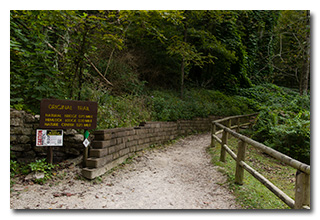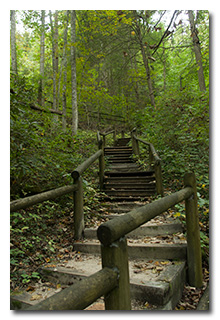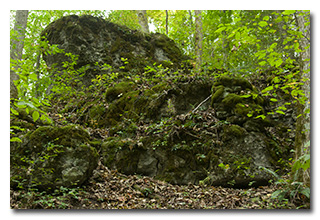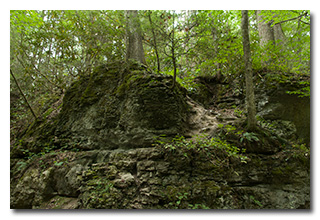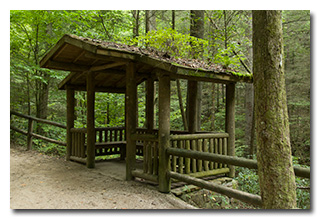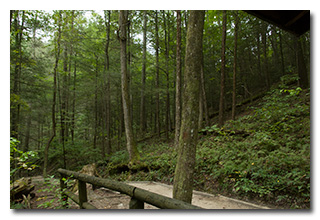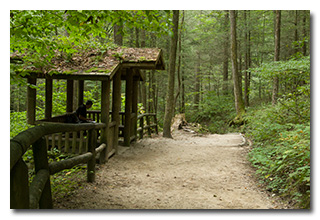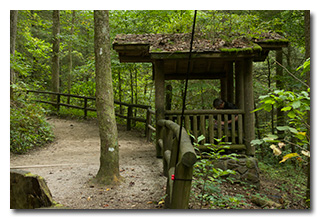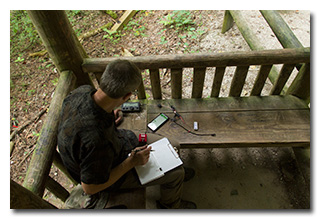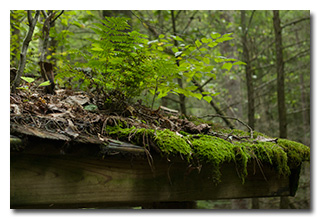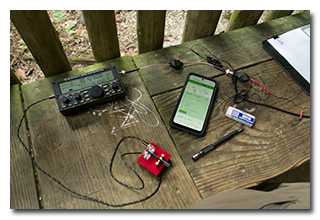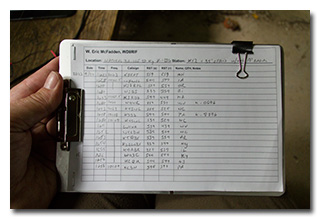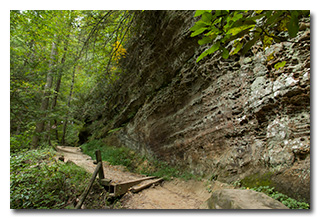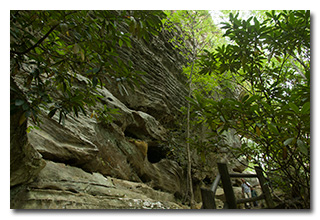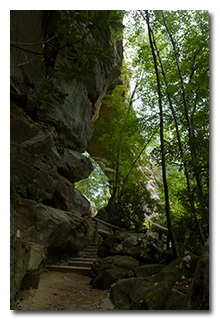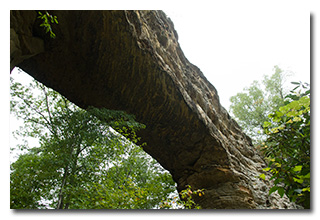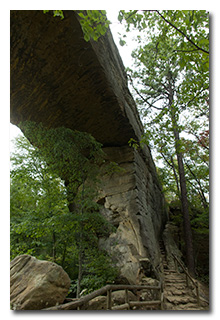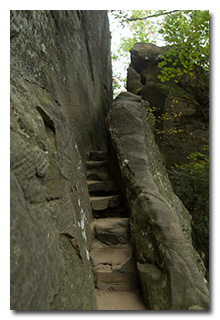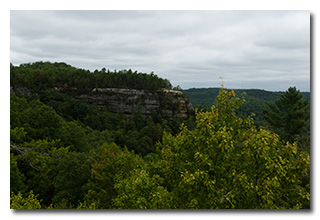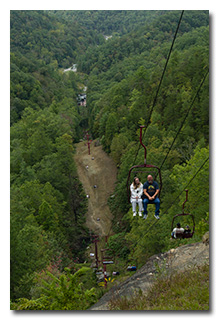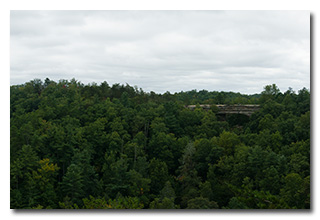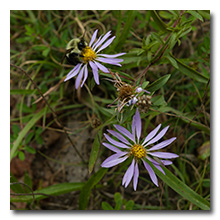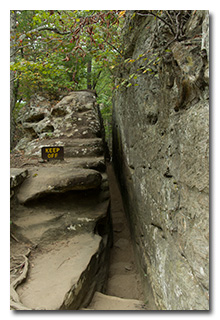Description
On Sunday, September 24, 2023, two members of the Southeast Ohio Radio Adventure Team performed a successful activation of Natural Bridge State Park in Kentucky as part of the Parks on the Air (POTA; link) program.
On their way home following two days working as radio operators at the Boone Forest Rally in McKee, Kentucky, and following an activation of Fort Boonesborough State Park (link), Eric and Miles stopped at Natural Bridge State Park for a hike to the spectacular natural bridge and a trail-side POTA activation.
Arriving at the Natural Bridge State Park gift shop and trailhead parking lot, Eric and Miles picked up a trail map in the gift shop and used the facilities before loading up with gear and beginning the hike into the woods and toward the natural bridge. Eric's plan was to set up his station in one of the five trail-shelters along the trail and he was carrying his DSLR camera; his KX2 Mini Travel Kit; and a backpack containing his Goture Red Fox Super Hard 720 carbon-fiber mast, a spike-base for the mast, bungies, a towel1, a light jacket, and a hat.
In due course, Eric and Miles encountered the first trail-shelter, and then the second. When Eric saw the third trail-shelter, he declared, "This is the one!". This trail-shelter was unoccupied, had nice benches, and a well-place railing-post to support his carbon-fiber mast.
Eric bungied his Goture Red Fox Super Hard 720 carbon-fiber mast on the most distant railing-post, sloped his Tufteln (link) 35' EFRW antenna from the trail-shelter to top of the mast, threw a single 17' counterpoise wire out of the back of the trail-shelter, and deployed his KX2 on a bench within the trail-shelter. Eric was on the air 1617 UTC.
Eric was surprised to find he had good cell-signal at this location, and would be able able to spot himself on POTA Spots (link) and to use POTA Spots to identify possible park-to-park (P2P) QSO opportunities.
With the hope that his friends K4SWL and K8RATs could work him, Eric began his operation on 40m. Finding himself a frequency, Eric began calling CQ, and was quickly auto-spotted on POTA Spots. After several minutes of calling CQ, his first QSO came at 1623 UTC with his friend K8RAT in Ohio. Several more minutes of calling CQ failed to produce any additional QSOs.
Switching to 20m, Eric found a frequency to run, began calling CQ, and was again quickly auto-spotted on QRP Spots. His first QSO in this run came at 1628 UTC with W0WLL in Iowa. QSOs came steadily, with Eric's fourth QSO in this run coming at 1633 UTC with K1RDD in Massachusetts. This run included a P2P QSO with N1BS who was activating Carolina Wildlife Management Area (K-7716) in Rhode Island and QSOs with operators located in Iowa, Oregon, Rhode Island, and Massachusetts.
Pausing to check POTA Spots for P2P QSO opportunities, at 1640 UTC Eric completed a P2P QSO on 40m with N4NR who was activating New River Gorge National Park (K-0696) in West Virginia.
Finding his own frequency to run on 40m for a second attempt on that band, Eric began calling CQ and was auto-spotted to POTA Spots. At 1643 UTC, he completed a QSO with his friend K4SWL in North Carolina.
Pausing again to hunt for P2P QSOs, at 1648 UTC Eric completed a P2P QSO on 30m with KD3D who was activating PA 199 State Game Land (K-8896) in Pennsylvania.
Finding his own frequency to run on 30m, Eric began calling CQ and self-spotted himself to POTA Spots. His first QSO in this run came at 1650 UTC and was a second QSO with his friend K4SWL in North Carolina. QSOs came quickly, with Eric's ninth QSO in this run coming at 1658 UTC with KC3N in Pennsylvania. This run included QSOs with operators located in North Carolina (2), West Virginia, Arkansas, New York, Illinois, Kentucky, New Jersey, and Pennsylvania.
Wanting to get back to the hike to the natural bridge, Eric finished his activation with seventeen QSOs, including three P2P QSOs. All of Eric's QSOs were CW and were made with five watts output.
Miles did not operate but helped with station set-up and tear-down, and he did much of the activation photography.
After station tear-down, Eric and Miles continued their hike up to the natural bridge.
After enjoying the view from Lookout Point, Eric and Miles retraced their steps on "The Original" to return the car.
Eric had forgotten to start his Strava app for the climb up to the natural bridge and Lookout Point, but the hike would have been approximately 1.4 miles with about 420' of climb. He did remember to track the return trip.
Eric also submitted his log to the World Wide Flora and Fauna in Amateur Radio (WWFF; link) program.
Footnotes:
[1] "Listen. It's a tough universe. There's all sorts of people and things trying to do you, kill you, rip you off, everything. If you're going to survive out there, you've really got to know where your towel is." — Ford Prefect
(return)

